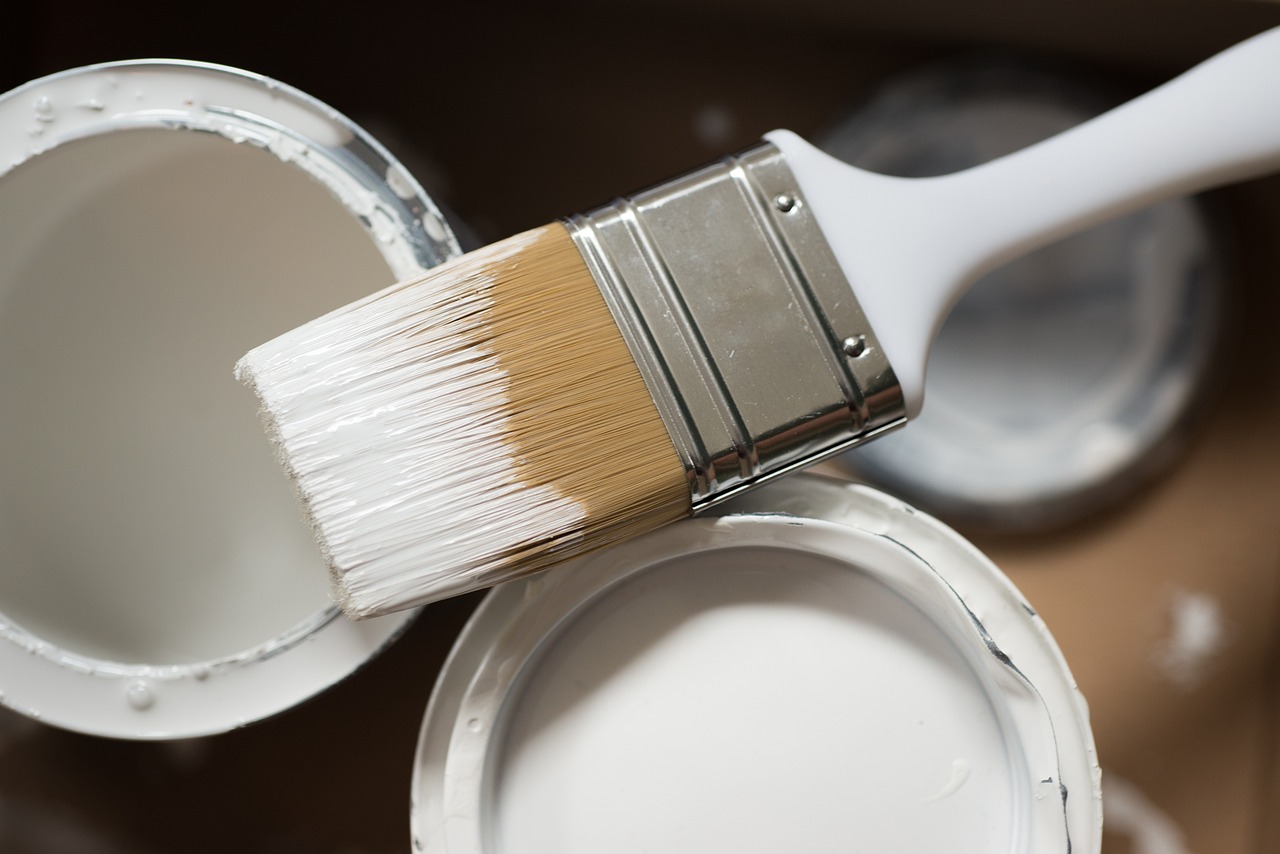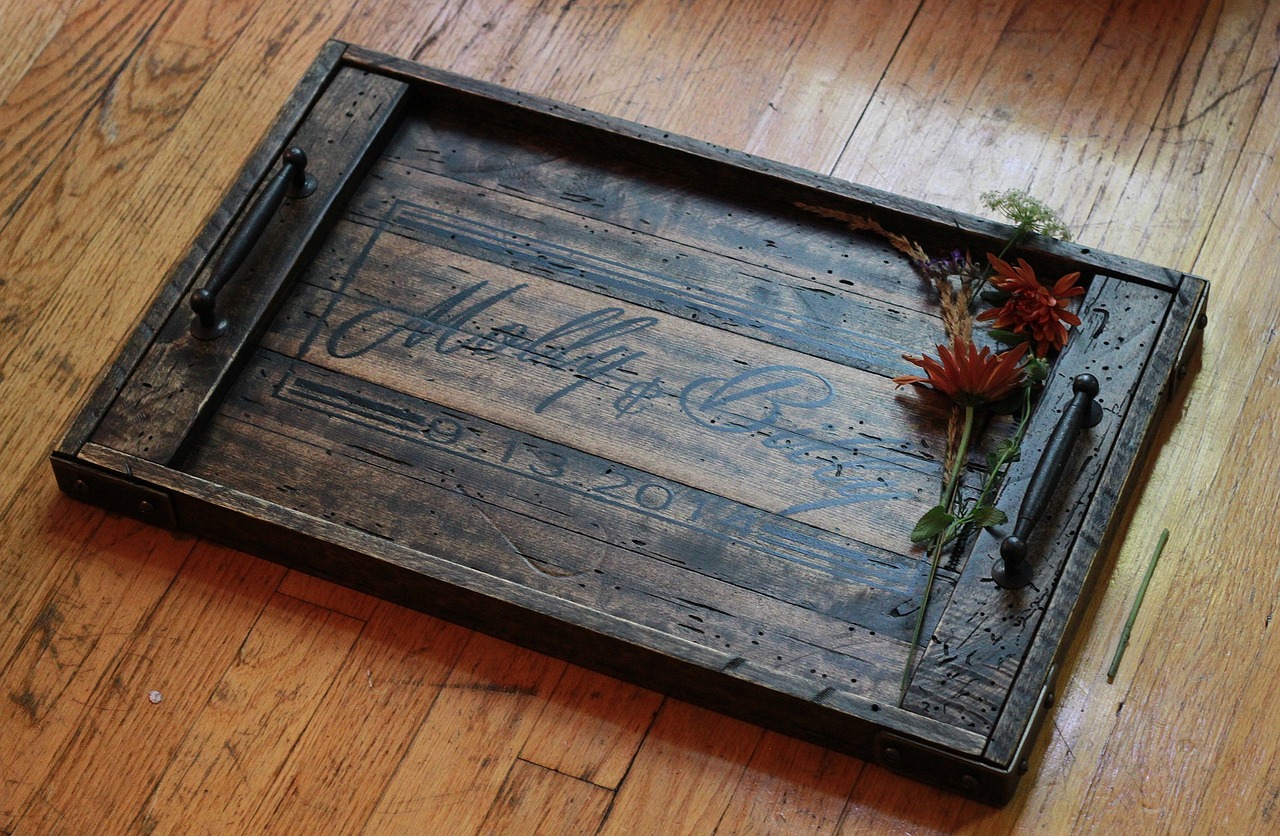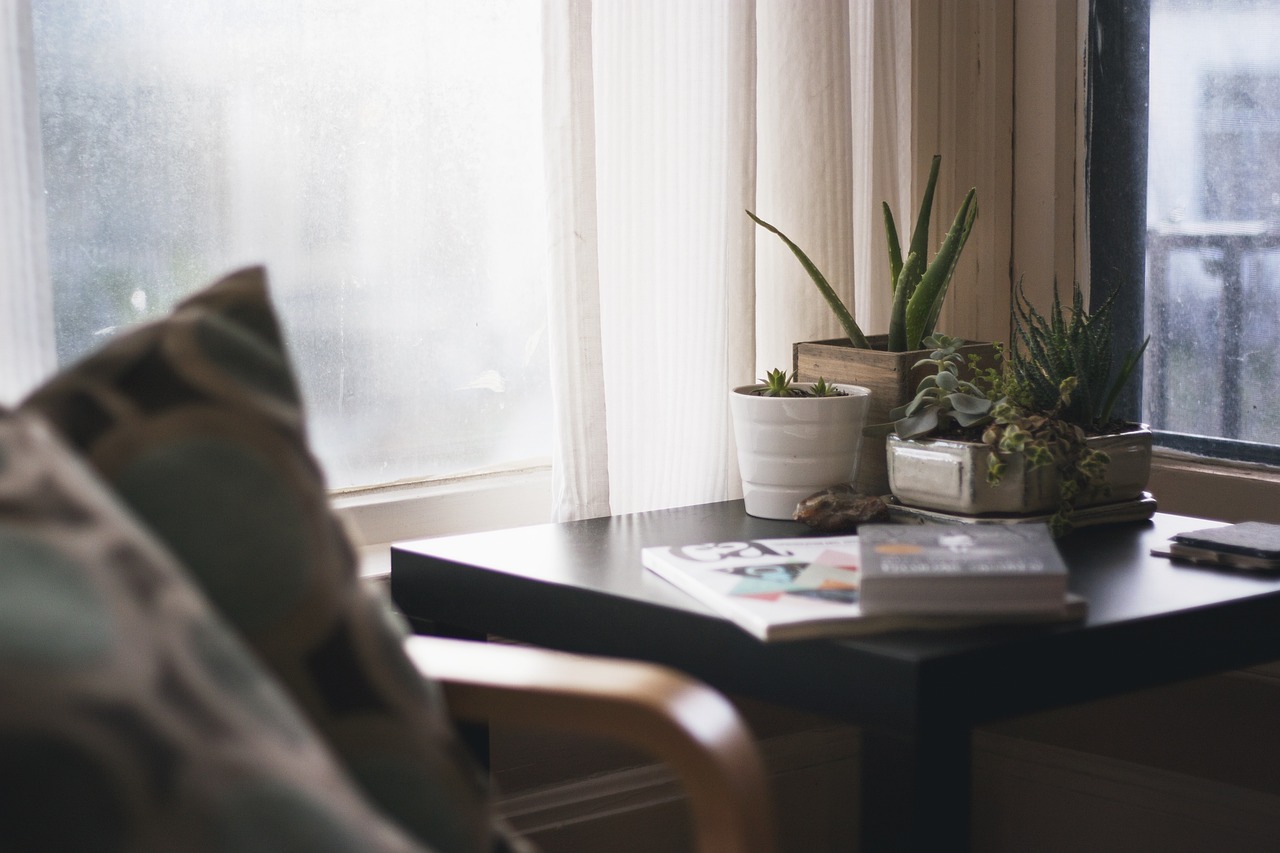DIY Home Decor: Reusing Old Sweaters
Are you tired of looking at those old sweaters stuffed in the back of your closet? Instead of letting them gather dust, why not breathe new life into them? This article explores creative ways to repurpose old sweaters into unique home decor items, highlighting sustainable practices and fun DIY projects that will make your living space feel cozy and stylish. Imagine snuggling up on your couch with a warm throw made from your favorite old knit or decorating your walls with vibrant, textured art pieces that tell a story. Not only will you declutter your home, but you'll also embrace a more sustainable lifestyle by reusing materials that might otherwise end up in a landfill. Let's dive into the world of DIY home decor and discover how to transform those beloved sweaters into beautiful, functional pieces that reflect your personal style!
Transforming old sweaters into decorative pillows is a fun and easy project that anyone can tackle. Picture this: you have a couple of oversized sweaters that you loved but haven’t worn in years. Instead of tossing them aside, you can turn them into cozy, personalized cushions that add warmth to any room. To get started, all you need are some basic sewing skills, a pair of scissors, and a few supplies. Simply cut the sweater to your desired pillow size, stitch up the sides, and stuff it with your favorite filling—whether it’s polyester fiberfill or even some old pillow stuffing you have lying around. The result? A unique pillow that not only looks great but also carries a sense of nostalgia!
Learn how to turn old sweaters into stylish storage baskets that are both functional and decorative. These baskets are perfect for organizing your living space while adding a touch of warmth and charm. To create your own sweater basket, start by cutting the sleeves and body of the sweater into strips. Then, weave or braid these strips together to form the sides of your basket. You can even reinforce the base with a sturdy cardboard or felt piece to ensure it holds its shape. As you craft, consider the texture and color of the sweater—this will not only impact the basket's look but also its durability.
Selecting the right sweater for your basket project is crucial. Look for sweaters made from thicker materials, such as wool or chunky knits, as they provide the necessary strength and structure. Avoid stretchy or flimsy fabrics, which may not hold up well over time. When you choose a sweater, think about its color and pattern too. A solid color might offer a sleek, modern look, while a patterned sweater can add a playful touch to your decor.
Explore how color and pattern choices can enhance the look of your sweater baskets. For a cohesive decor theme, consider mixing and matching designs that complement each other. You might pair a striped sweater with a solid color to create visual interest. Additionally, think about the overall color palette of the room where the basket will reside. Harmonizing the basket with existing decor can make it feel like a natural part of the space.
Learn essential techniques for reinforcing your sweater baskets to ensure they hold their shape and function effectively. One effective method is to sew a lining inside the basket. This could be a simple cotton fabric that matches your sweater or adds a pop of color. Stitching the lining securely will help the basket maintain its structure and prevent any stretching. You can also use interfacing for added support, making your basket not just pretty but also practical!
Discover how to create unique wall art using scraps from old sweaters. This is a fantastic way to use up leftover material while adding character to your walls. You can cut the sweater into different shapes, such as hearts, stars, or even abstract designs, and frame them in shadow boxes or simply pin them to a corkboard. The texture of the knit fabric will create a stunning visual contrast against your wall, making it a conversation starter in your home.
Repurposing sweaters into cozy throws is an excellent way to keep warm and stylish. Imagine curling up on a chilly evening with a blanket made from your favorite old sweaters. The process of sewing and finishing your new favorite blanket is straightforward. You can cut various sweaters into equal-sized squares or rectangles and sew them together. This not only gives you a warm throw but also a unique patchwork design that showcases different colors and textures.
Learn how to combine various sweater textures for a visually appealing throw. Mixing materials like cashmere with wool or cotton can create depth and interest in your design. The key is to balance the textures so that they complement each other rather than compete. This technique will not only make your throw more visually engaging but also add to its comfort level.
Maintaining your sweater throws is essential for longevity. To keep your newly crafted items looking fresh and inviting for years to come, it’s important to follow a few care tips. Always wash your throws in cold water on a gentle cycle, and avoid using harsh detergents. Air drying is recommended to prevent shrinkage. If you notice any pilling, gently use a fabric shaver to keep your throw looking pristine.
Q: Can I use any type of sweater for these projects?
A: While you can use various types of sweaters, thicker materials like wool or chunky knits work best for durability.
Q: How do I clean my sweater crafts?
A: Wash them in cold water on a gentle cycle and air dry to maintain their shape and texture.
Q: What if I don’t know how to sew?
A: No worries! You can use fabric glue for some projects, or even hand-stitch if you prefer a more personal touch.

Creative Ideas for Sweater Pillows
Transforming old sweaters into decorative pillows is not just a fun project; it's a way to breathe new life into garments that might otherwise collect dust in your closet. Imagine snuggling up on your couch with a pillow that not only looks fabulous but also tells a story! With a little creativity and some basic sewing skills, you can create cozy, personalized cushions that add warmth and charm to any room in your home.
To start, gather your old sweaters. Look for those that have unique patterns, colors, or textures that resonate with your personal style. You can mix and match different sweaters to create a collection of pillows that showcase your individuality. For instance, a chunky knit sweater can bring a rustic vibe, while a brightly colored sweater can add a pop of fun to your decor.
Once you've chosen your sweaters, the next step is to decide on the shape and size of your pillows. A classic square pillow is always a safe bet, but why not get adventurous? Consider crafting round or even heart-shaped pillows for a playful touch. The beauty of DIY projects is that you can customize them to fit your vision!
Here’s a simple step-by-step guide to creating your sweater pillows:
- Cut the Sweater: Lay your sweater flat and use fabric scissors to cut out two pieces of fabric in your desired shape. Make sure to leave a seam allowance of about half an inch.
- Sew the Edges: Place the two pieces together, inside out, and sew around the edges, leaving a small gap for stuffing.
- Stuff the Pillow: Turn the pillow right side out and fill it with your choice of stuffing. You can use traditional pillow stuffing, or even scraps of fabric for an eco-friendly approach.
- Close the Gap: Hand stitch the opening closed, ensuring it’s secure and neat.
Now, you have a beautiful sweater pillow that not only enhances your decor but also keeps you cozy during those chilly nights. You can create a whole set of these pillows in different sizes and colors to create a cohesive look on your couch or bed.
Feeling a bit more adventurous? Why not add some embellishments? You can sew on buttons, patches, or even create a pocket on the front of the pillow to store small items. This not only adds a decorative touch but also makes your pillows functional!
Finally, don't forget about the care of your new creations. Most sweater pillows can be spot cleaned, but always check the care label of the original sweater. With a little love and attention, your sweater pillows will serve as charming additions to your home decor for years to come!
- Can I wash my sweater pillows? Yes, but it’s best to spot clean them to maintain their shape and texture.
- What type of stuffing should I use? You can use traditional polyester stuffing, cotton, or even scraps from other fabric projects for a more sustainable option.
- Do I need to sew the pillows by hand? While hand sewing is an option, a sewing machine can make the process quicker and more efficient.

Sweater Baskets: A Cozy Touch
Have you ever looked around your home and thought, "I need more storage, but I want it to look good too?" Well, look no further! Repurposing old sweaters into stylish storage baskets is not only a fantastic way to declutter your space but also a creative outlet that adds a personal touch to your decor. Imagine cozying up your living room or bedroom with unique baskets that tell a story—your story! And the best part? It's a sustainable project that helps reduce waste while giving your old sweaters a second life.
To get started, gather your old sweaters. You might have some hanging in your closet that you no longer wear, or you could even check out local thrift stores for colorful options. When choosing sweaters, consider the following:
- Material: Wool and cotton are excellent choices for durability and texture.
- Color: Bright, bold colors can make your basket a statement piece.
- Style: Look for sweaters with interesting patterns or textures that can add character to your baskets.
Now that you have your sweaters, let's dive into the crafting process! The first step is to cut the sweaters into strips or sections. These pieces will serve as the base for your basket. You can use the body of the sweater for the main part and the sleeves for handles or decorative elements. The beauty of this project lies in its flexibility—there’s no strict pattern to follow, so feel free to let your creativity shine.
Once you have your sweater pieces ready, it’s time to start weaving or sewing them together. You can create a round or square basket, depending on your preference. If you're weaving, simply intertwine the strips like you would with a traditional basket. If you’re sewing, use a simple straight stitch to secure the pieces together. Don't worry if it’s not perfect; the charm of DIY projects is in their uniqueness!
To ensure your basket is sturdy and functional, consider reinforcing the bottom. You can use cardboard or a sturdy fabric as a base, cutting it to fit the size of your basket. This added support will help your basket hold its shape and carry items without sagging. Once you’ve assembled your basket, you can embellish it further with buttons, patches, or even fabric paint for a personalized touch.
When it comes to using your sweater baskets, the possibilities are endless! Use them to store blankets, magazines, toys, or even as a stylish way to organize your craft supplies. They can be placed in any room of your home, adding a cozy and inviting atmosphere wherever they go. Plus, every time you glance at these charming pieces, you'll be reminded of your sustainable crafting journey.
Q: Can I use any type of sweater for this project?
A: While most sweaters can work, opt for those made from wool or cotton for better durability. Avoid sweaters with a lot of embellishments that might make sewing difficult.
Q: How do I ensure my basket holds its shape?
A: Reinforcing the base with cardboard or sturdy fabric is key. Additionally, using thicker sweater material can help maintain structure.
Q: What can I store in my sweater baskets?
A: You can use them for various items like blankets, toys, books, or even as a decorative catch-all for miscellaneous items around the house.
Q: Can I wash my sweater baskets?
A: It’s best to spot clean them or use a lint roller for any dust. If they need a deeper clean, hand wash them gently and air dry to maintain their shape.

Choosing the Right Sweater
When it comes to transforming your old sweaters into stunning home decor, is absolutely crucial. Not all sweaters are created equal, and some materials lend themselves better to DIY projects than others. For instance, you'll want to look for sweaters made from natural fibers such as wool or cotton. These materials not only provide a cozy feel but also tend to be more durable, ensuring your creations stand the test of time. On the other hand, synthetic fibers like polyester might not hold up as well, especially if you're planning to use your items frequently.
Think about the weight of the sweater too. Heavier knits are perfect for projects like sweater pillows or throws, as they offer warmth and structure. Lighter knits can be great for decorative items, but they might not provide the same level of durability. So, as you sift through your closet, keep these factors in mind:
- Material: Wool, cotton, or blends are ideal.
- Weight: Heavier knits for pillows and throws; lighter for decorative accents.
- Condition: Look for sweaters that are free from holes or significant wear.
Additionally, consider the style and color of the sweater. A vibrant, patterned sweater can add a pop of color to your decor, while a neutral tone might blend seamlessly with your existing furnishings. If you're feeling adventurous, mix and match different textures and patterns to create a unique look. Remember, your home decor should reflect your personality, so don’t shy away from bold choices!
Finally, if you're unsure about which sweater to choose, think about the sentimental value of certain pieces. Maybe that oversized knit was a gift from a loved one or a favorite from your college days. Repurposing these items not only gives them a new life but also keeps cherished memories close by. So, as you embark on your DIY journey, take a moment to appreciate the stories behind your sweaters and how they can enhance your living space.

Color and Pattern Considerations
When it comes to transforming your old sweaters into stylish storage baskets, color and pattern choices play a crucial role in the overall aesthetic of your home decor. Think of your living space as a canvas; the colors and patterns you choose can either make it pop with personality or leave it feeling drab and uninspired. So, how do you select the right hues and designs to create a cohesive look?
First and foremost, consider the existing color palette of your room. Are you leaning towards a neutral theme with whites, grays, and beiges, or do you prefer a more vibrant and eclectic mix? If your space is already filled with bold colors, opting for muted tones in your sweater baskets can help balance the visual weight. Conversely, if your decor is more subdued, a splash of bright, cheerful colors can add a delightful touch.
Another aspect to ponder is the patterns of the sweaters you choose. Stripes, polka dots, florals, or even chunky knits can all contribute to the character of your baskets. Mixing different patterns can create a fun, layered effect, but it’s essential to maintain some level of harmony. For instance, combining a striped sweater with a floral one can work beautifully if they share a common color. The key is to strike a balance between variety and cohesion.
Here’s a quick breakdown of how to effectively mix colors and patterns:
- Stick to a Color Scheme: Choose two to three main colors that complement each other.
- Vary the Scale: Mix large patterns with smaller ones to create visual interest without overwhelming the space.
- Texture Matters: Consider the texture of the sweaters; a chunky knit can add depth to a smooth pattern.
Don’t forget about the emotional impact of colors! Warm tones like reds and oranges can evoke feelings of comfort and energy, while cool tones such as blues and greens can promote calmness and tranquility. Think about how you want each room to feel and select your sweater colors accordingly. For example, a cozy reading nook might benefit from soft, warm hues, whereas a home office could thrive with cool, focused tones.
In summary, choosing the right colors and patterns for your sweater baskets is not just about aesthetics; it’s about creating a space that reflects your personal style and enhances your living environment. So, take a moment to assess your existing decor, consider the emotional tone you want to set, and let your creativity flow as you mix and match those old sweaters into beautiful, functional pieces!
Q1: Can I use any type of sweater for these projects?
A1: While you can use any sweater, it's best to choose those made from materials like wool or cotton for durability. Avoid sweaters with too much stretch or wear.
Q2: How do I ensure the colors match my existing decor?
A2: Take a swatch of your decor colors, such as paint or fabric, when selecting sweaters. This will help you visualize how the new pieces will fit into your space.
Q3: What if I don't have enough sweaters to complete a project?
A3: You can mix and match with other fabric scraps or even purchase second-hand sweaters from thrift stores to achieve the desired look.
Q4: How do I care for my sweater baskets to ensure they last?
A4: Regularly dust them and spot clean any stains. If they lose shape, you can gently reshape them by hand or reinstate their form with a light fabric stiffener.

Techniques for Reinforcement
When it comes to crafting sweater baskets, ensuring that they are both functional and aesthetically pleasing requires some thoughtful reinforcement techniques. After all, no one wants a basket that collapses under the weight of a few magazines or cozy blankets! To start, consider using a sturdy base for your basket. This could be a piece of cardboard cut to size or a round wooden base that provides a solid foundation. By securing your sweater to this base, you create a strong structure that can hold its shape.
Next, stitching is your best friend. Use a sewing machine or needle and thread to sew the edges of the sweater together, making sure to reinforce the seams. A zig-zag stitch not only adds a decorative touch but also prevents the fabric from fraying. If you’re feeling adventurous, try using a contrasting thread color for a pop of visual interest! Additionally, consider adding a lining to your basket. A simple cotton fabric lining can provide extra support and can be easily washed if needed. Just cut the fabric to size, sew it into the basket, and voilà!
Another effective technique is to incorporate interfacing. This is a material that adds stiffness and stability to fabric. You can find various types of interfacing at your local craft store, including fusible options that can be ironed onto the inside of your sweater. This will not only help your basket maintain its shape but will also give it a more polished look. When applying interfacing, ensure that you follow the manufacturer's instructions for the best results.
Lastly, don't forget about the handles! If you plan to use your sweater basket for carrying items, make sure to reinforce the handles. You can do this by sewing in additional layers of fabric or using sturdy rope or cord. The handles should be securely attached to the basket, allowing you to lift and carry your items without worry. Remember, a well-reinforced basket is not only functional but can also be a beautiful addition to your home decor.

Wall Art from Sweater Scraps
Creating unique wall art from old sweater scraps is not only a fun and creative project but also a fantastic way to add a personal touch to your home decor. Imagine transforming those worn-out sweaters into beautiful pieces of art that tell a story and reflect your style! This DIY project allows you to unleash your creativity while embracing sustainability by giving new life to materials that would otherwise end up in the landfill.
To get started, gather your old sweaters and think about the kind of art you want to create. You can make textured wall hangings, framed pieces, or even three-dimensional art that pops off the wall. The beauty of using sweater scraps is that you can mix and match colors, patterns, and textures to create something truly one-of-a-kind. For instance, you might choose to combine a chunky knit with a soft, smooth fabric to add depth and interest to your piece.
Here are some ideas to inspire your wall art project:
- Framed Sweater Panels: Cut out sections of your favorite sweaters and frame them in shadow boxes or traditional frames. This approach allows you to showcase the unique patterns and textures of the fabric.
- Textured Wall Hangings: Use various sweater scraps to weave or stitch together a stunning wall hanging. You can experiment with different knotting techniques or even use a simple embroidery hoop to create a circular piece.
- 3D Sweater Flowers: Craft beautiful flowers from sweater scraps and attach them to a canvas or wooden board. These vibrant blooms can add a whimsical touch to any room.
When working with sweater scraps, consider using a hot glue gun or needle and thread to secure your pieces together. If you're feeling adventurous, try adding embellishments like buttons, beads, or even fabric paint to enhance your designs further. Remember, the goal is to have fun and let your personality shine through your creations!
As you work on your wall art, think about the overall theme of your room. You can coordinate colors and styles to ensure your art complements your existing decor. For example, if your living room has a cozy, rustic vibe, opt for earthy tones and chunky knits. On the other hand, if your space is more modern, you might choose sleek, minimalist designs with contrasting colors.
Lastly, don’t forget about the placement of your newly created wall art. Hang it at eye level to ensure it catches the attention of anyone who enters the room. You can also create a gallery wall by grouping several pieces together for a more dynamic look. This not only fills empty wall space but also creates a focal point that draws the eye.
Q: What types of sweaters work best for wall art?
A: Any type of sweater can work, but those with interesting textures, patterns, or colors will create the most visually appealing pieces. Look for wool, cashmere, or knit sweaters that can be easily cut and manipulated.
Q: Do I need special tools for this project?
A: Basic crafting tools such as scissors, a hot glue gun, and a needle and thread are sufficient. If you're creating more complex pieces, you may want to invest in a sewing machine or other crafting supplies.
Q: How can I maintain the quality of my sweater wall art?
A: To keep your wall art looking fresh, avoid direct sunlight, which can fade colors over time. Dust your pieces regularly and consider using a fabric protector spray to help them resist stains and wear.

Cozy Sweater Throws
Repurposing old sweaters into cozy throws is not just a way to keep warm; it’s a delightful journey into creativity that transforms your living space into a haven of comfort. Imagine snuggling up on a chilly evening, wrapped in a blanket made from your favorite old sweaters, each stitch telling a story of warmth and nostalgia. This project is perfect for those who love to add a personal touch to their home decor while embracing sustainable practices. So, how do you get started? Let’s dive into the process of sewing and finishing your new favorite blanket!
First things first, gather your materials. You’ll need a selection of old sweaters, scissors, a sewing machine or needle and thread, and some fabric for lining if you desire extra coziness. The beauty of this project lies in the variety of textures and colors you can incorporate. Think about using chunky knits for warmth and thinner, softer fabrics for comfort. Mixing and matching different styles can create a visually appealing throw that not only keeps you warm but also serves as a striking piece of decor.
When it comes to cutting your sweaters, aim for large pieces that will form the body of your throw. You can choose to keep the original hems for a more finished look, or you can cut them straight for a more modern touch. It’s essential to lay out your pieces before you start sewing to visualize how they will come together. This is where your creativity can shine! You might decide to create a patchwork effect, or perhaps you prefer a more uniform design. The choice is yours!
Once you’ve laid out your pieces, it’s time to sew them together. If you’re using a sewing machine, set it to a medium stitch length to ensure durability. If you’re sewing by hand, use a sturdy needle and thread to withstand the tension of the fabric. Remember, the goal is to create a throw that is not only beautiful but also functional. For added durability, consider reinforcing the seams with a zigzag stitch to prevent fraying.
After sewing your pieces together, it’s time to finish your throw. This might involve adding a lining for extra warmth or simply trimming any excess threads. If you want to give your throw a polished look, you can also add a decorative border using a contrasting fabric. This little detail can elevate your project from a simple DIY to a stunning piece of home decor.
Now that you have your cozy sweater throw, it’s important to think about care and maintenance. Sweater throws can be delicate, so it’s best to wash them gently. Here are some tips to keep your throw looking fresh:
- Hand wash in cold water with a mild detergent.
- Lay flat to dry to maintain its shape.
- Avoid wringing or twisting the fabric to prevent stretching.
By following these steps, you’ll not only create a beautiful and functional throw, but you’ll also contribute to a more sustainable lifestyle by repurposing materials that might have otherwise gone to waste. So, gather those old sweaters, unleash your creativity, and enjoy the cozy comfort of your very own sweater throw!
Q: Can I use any type of sweater for this project?
A: While you can use various types of sweaters, it's best to choose those made from soft, warm materials like wool, cashmere, or cotton blends for maximum comfort.
Q: How do I ensure my throw is machine washable?
A: To make your throw machine washable, choose sweaters that are machine washable and avoid using delicate fabrics. Always check the care labels before starting your project.
Q: What if I don’t have enough old sweaters?
A: If you’re short on sweaters, consider visiting thrift stores or asking friends and family if they have any old sweaters they no longer wear. It’s a fun way to gather materials!

Combining Different Textures
When it comes to crafting a cozy sweater throw, one of the most exciting aspects is the opportunity to combine different textures. Imagine snuggling up under a blanket that not only keeps you warm but also provides a feast for the senses. Mixing various sweater materials—like soft cashmere, chunky knits, and even ribbed fabrics—can create a visually stunning and tactile experience. Each texture brings its own character, and together, they can transform your throw into a unique masterpiece.
To achieve the perfect blend, consider the following tips:
- Balance is Key: Aim for a harmonious mix of textures. For instance, pairing a delicate cashmere with a chunky wool can create a beautiful contrast that is both eye-catching and inviting.
- Color Coordination: While focusing on textures, don’t forget about colors. Choosing complementary shades can enhance the overall aesthetic. Think of warm earth tones or cool pastels that can evoke a specific mood in your living space.
- Layering Techniques: Layering different textures adds depth. You might start with a base of soft fleece, then incorporate a few patches of cable-knit or patterned wool on top to create visual interest.
As you embark on this creative journey, remember that the goal is to make a throw that feels as good as it looks. Mixing textures should not only be about aesthetics but also about comfort. When you curl up with your new blanket, you want to feel enveloped in warmth and coziness. Consider how each material feels against your skin and how they work together.
Moreover, don’t hesitate to experiment! Sometimes, the most unexpected combinations yield the best results. For example, pairing a soft angora with a rugged, textured knit can create a delightful juxtaposition that invites curiosity. Just like in cooking, where a pinch of spice can elevate a dish, a dash of an unexpected texture can make your throw stand out.
Finally, think about the practical aspects of combining textures. Some materials may require special care or have different durability levels. Be sure to choose fabrics that will hold up well together, especially if your throw will see frequent use. A well-constructed throw can last for years, becoming a beloved staple in your home.
In conclusion, combining different textures in your sweater throw not only enhances its visual appeal but also enriches your overall experience. It’s about creating a cozy space that reflects your personality and style. So gather those old sweaters, let your creativity flow, and enjoy the process of crafting a unique piece that you’ll cherish for years to come!
Q: What types of sweaters are best for combining textures?
A: Look for a variety of materials such as wool, cashmere, cotton, and blends. Each brings a unique feel and look, making your throw more interesting.
Q: How do I care for my textured sweater throw?
A: Always check the care labels of the original sweaters. Generally, hand washing in cold water and air drying is best to maintain the integrity of the fabrics.
Q: Can I use non-sweater materials in my throw?
A: Absolutely! Feel free to incorporate other fabrics like fleece or flannel to add even more texture and warmth to your throw.

Care and Maintenance Tips
Once you've transformed your old sweaters into cozy throws, it's essential to care for them properly to ensure they remain beautiful and functional for years to come. Think of your sweater throw as a cherished friend; just like you wouldn’t neglect a friend, you should give your throw the attention it deserves. Here are some practical tips to keep your creations looking fresh and inviting:
First and foremost, gentle washing is key. Hand washing your sweater throws in cold water with a mild detergent will help maintain the integrity of the fabric. If you prefer using a washing machine, opt for the delicate cycle and place your throw in a mesh laundry bag to protect it from snagging. Avoid harsh chemicals and bleach, as they can damage the fibers and fade the colors.
After washing, avoid the temptation to wring out your throw. Instead, gently press the water out by laying it flat on a clean towel and rolling the towel up to absorb excess moisture. This method will help prevent stretching and distortion. Once you've done that, lay your throw flat on a drying rack or another clean towel to air dry. Never hang your throw, as this can lead to unwanted stretching.
Additionally, storage plays a crucial role in maintaining your sweater throws. When not in use, store them in a cool, dry place away from direct sunlight to prevent fading. Consider using cotton or breathable storage bags to keep dust and pests at bay. If you live in a humid area, adding silica gel packets can help absorb excess moisture and protect your throws from mildew.
Finally, regular fluffing is essential to keep your throws looking their best. Just like you would fluff up a pillow to restore its shape, give your sweater throws a little shake and fluff to keep the fibers lively. If you notice any pilling, gently use a fabric shaver or a lint roller to remove those pesky little balls of fuzz without damaging the fabric.
By following these care and maintenance tips, you’ll ensure that your cozy sweater throws remain a stylish and functional part of your home decor for many winters to come. Treat them well, and they’ll reward you with warmth and charm!
- Can I machine wash my sweater throw?
Yes, you can machine wash it on a delicate cycle, but it's best to hand wash to maintain its quality. - How do I remove pilling from my throw?
Use a fabric shaver or a lint roller to gently remove pilling without damaging the fabric. - What is the best way to store my sweater throw?
Store it in a cool, dry place, ideally in a breathable cotton bag to protect it from dust and pests. - Can I mix different sweater materials for my throw?
Absolutely! Mixing different textures can create a visually appealing throw, just ensure they are compatible in terms of washing and care.
Frequently Asked Questions
- What types of old sweaters are best for DIY home decor projects?
When it comes to DIY home decor, look for sweaters made from soft, durable materials like wool, cotton, or cashmere. These fabrics not only feel cozy but also provide a sturdy base for your projects. Avoid sweaters with heavy embellishments or delicate fabrics, as they may not hold up well in crafting.
- Can I use sweaters that have holes or are damaged?
Absolutely! In fact, using sweaters with holes can add character to your projects. You can strategically cut around the damaged areas or incorporate them into your designs for a unique look. Just make sure the overall structure of the sweater is still intact for your DIY creations.
- How do I wash and care for my repurposed sweater items?
To keep your sweater decor looking fresh, hand wash them in cold water with a gentle detergent. Avoid wringing them out; instead, lay them flat to dry. This helps maintain their shape and softness. For any throws or pillows, consider using a removable cover for easier cleaning.
- What tools do I need for repurposing old sweaters?
The tools you'll need can vary depending on your project, but generally, a pair of sharp scissors, a sewing machine (or needle and thread for hand sewing), and fabric glue are essential. If you're making baskets or wall art, you might also want some cardboard or a sturdy base for added support.
- Can I mix different sweater textures in my projects?
Definitely! Mixing different textures can create depth and interest in your designs. Combining chunky knits with smoother fabrics can result in beautiful, eye-catching pieces. Just ensure that the colors and patterns complement each other for a cohesive look.
- Are there specific patterns I should follow for making sweater pillows?
While there are many patterns available online, you can also create your own! A simple envelope style is easy to sew and allows for easy removal and washing. Just remember to leave enough seam allowance, especially if you're using thicker materials.
- What are some creative ideas for using sweater scraps?
Don't throw away those sweater scraps! You can use them to create unique wall art, patchwork projects, or even small items like coasters and keychains. Get creative and experiment with different shapes and designs to make something truly one-of-a-kind!



















